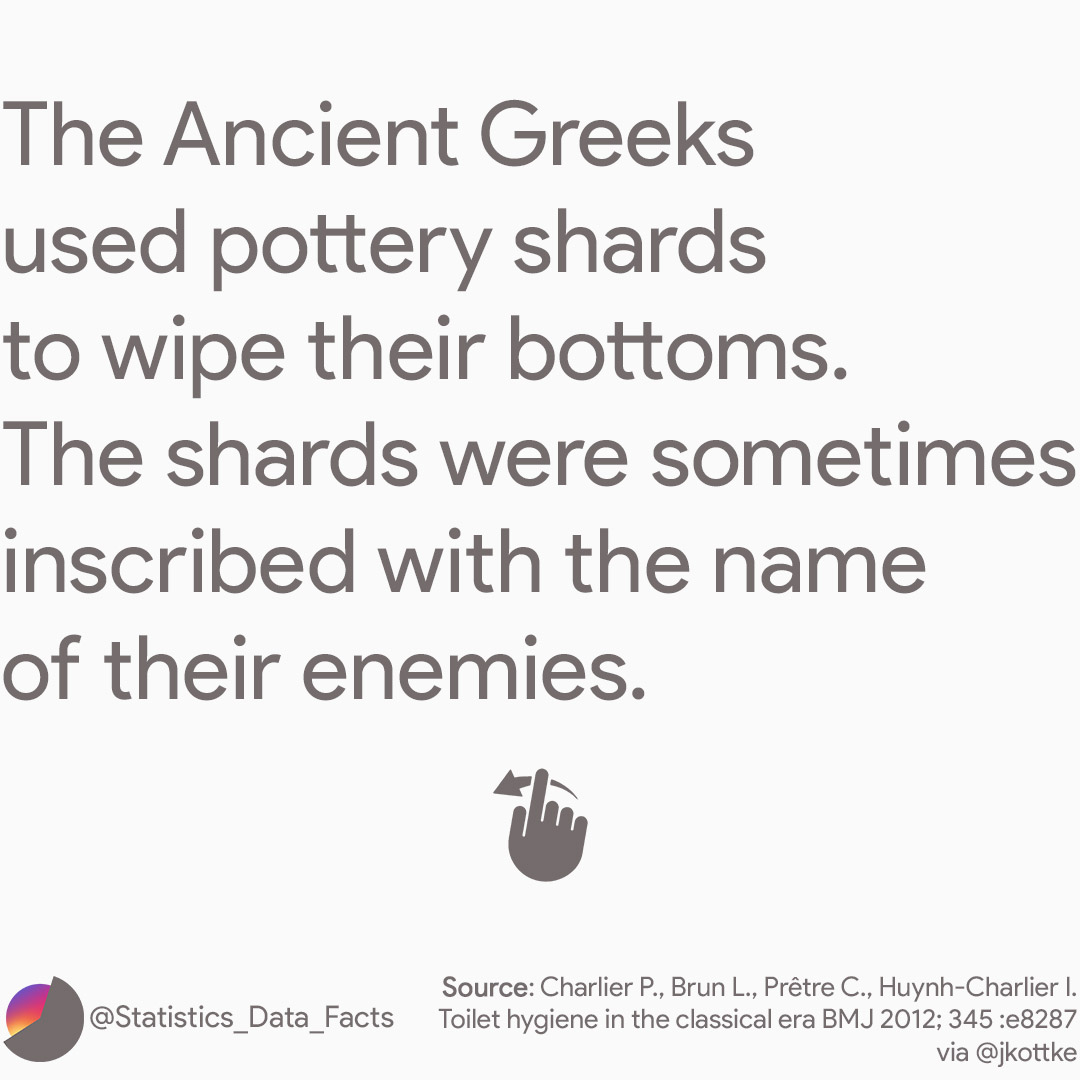The Ancient Greeks used pottery shards to wipe their bottoms
 |
| The Ancient Greeks used pottery shards to wipe their bottoms. The shards were sometimes inscribed with the name of their enemies. |
 |
| Tondo from a kylix - Late Archaic Period, about 510–500 B.C.: Museum of Fine Arts, Boston |
According to a paper that looked into "Toilet hygiene in the classical era", “during the Greco-Roman period, a sponge fixed to a stick (tersorium) was used to clean the buttocks after defecation; the sponge was then replaced in a bucket filled with salt water or vinegar water.
Another technique was to use oval or circular fragments of ceramic known as “pessoi” (meaning pebbles).
The use of a pessos can still be seen on a Greek cylix (wine cup) conserved in the Museum of Fine Arts in Boston, US. The cup, dating from 6th century BC, was found in Orvieto, Italy, and shows a man,semi-squatting with his clothing raised. The man is maintaining his balance with a cane in his right hand and is clearly wiping his buttocks using a pessos with his left hand.”
The first documented use of toilet paper in human history dates back to the 6th century AD, in early medieval China.
Toilet paper as we know it, wasn't commonly available in the United States until the mid 19th century!
The use of a pessos can still be seen on a Greek cylix (wine cup) conserved in the Museum of Fine Arts in Boston, US. The cup, dating from 6th century BC, was found in Orvieto, Italy, and shows a man,semi-squatting with his clothing raised. The man is maintaining his balance with a cane in his right hand and is clearly wiping his buttocks using a pessos with his left hand.”
The first documented use of toilet paper in human history dates back to the 6th century AD, in early medieval China.
Toilet paper as we know it, wasn't commonly available in the United States until the mid 19th century!

Comments
Post a Comment